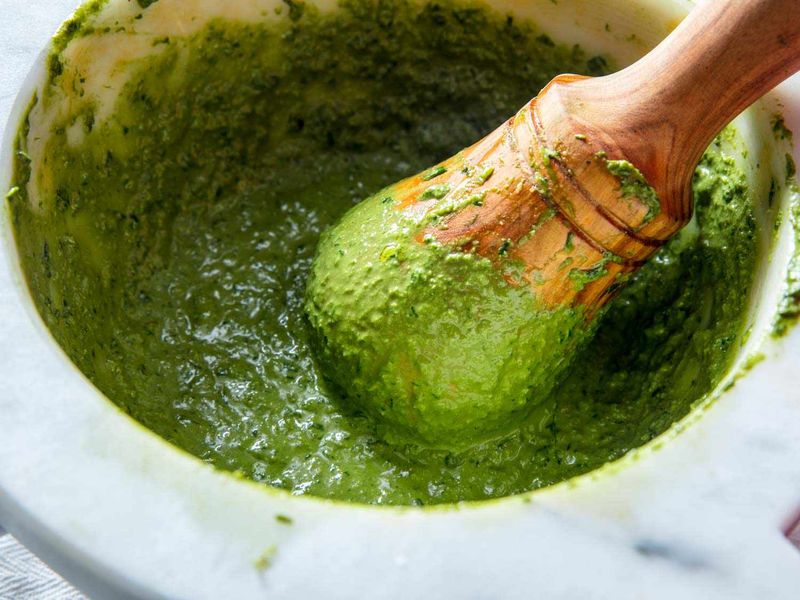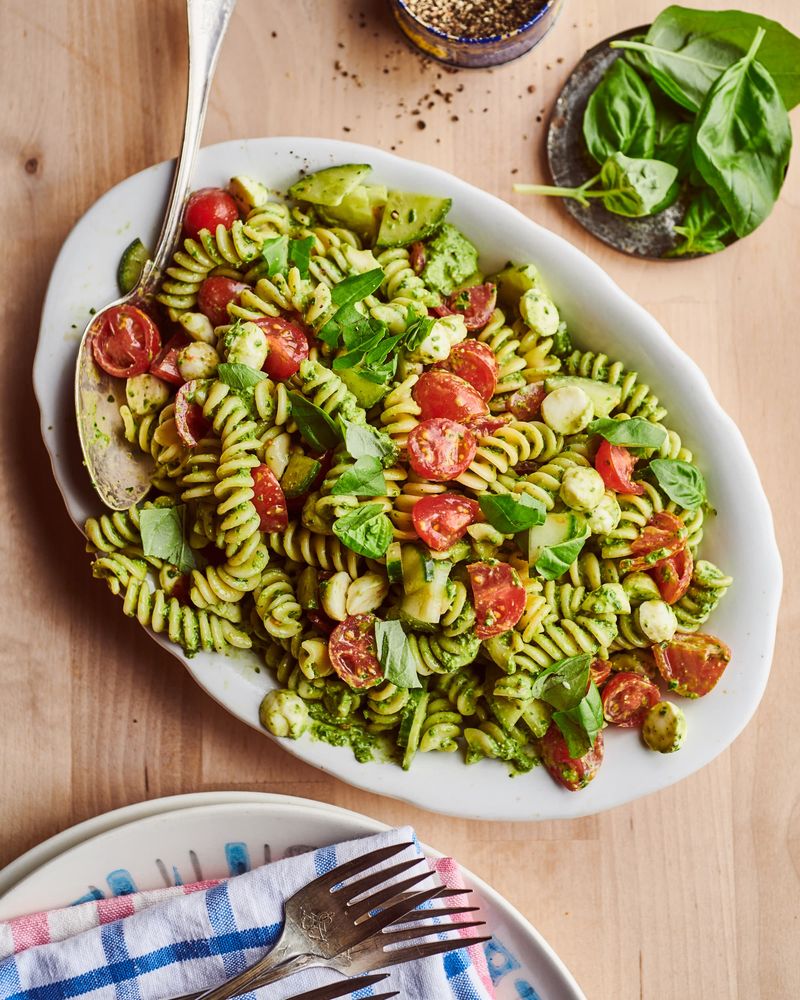Cue the dramatic music! In the culinary arena, there’s a showdown of epic proportions brewing. Forget Batman vs. Superman, it’s the vibrant clash of Red Pesto vs. Green Pesto! Which pesto will reign supreme?
Which one tastes better with your favorite pasta?
This article will dive deep into the mouthwatering details, hold on to your basil!
1. Base Ingredients Create Color Distinction

Green pesto (pesto alla Genovese) gets its signature hue from fresh basil leaves. The classic recipe combines this aromatic herb with pine nuts, garlic, Parmesan, and olive oil.
Red pesto (pesto rosso) swaps basil for sun-dried tomatoes, giving it that gorgeous ruby color. Sometimes roasted red peppers join the party too!
2. Flavor Profile Showdown

Green pesto delivers a bright, herbaceous punch with peppery basil taking center stage. It’s aromatic, slightly grassy, and has that distinctive basil fragrance that screams summer.
Red pesto brings sweet-tart notes from those concentrated sun-dried tomatoes. It’s deeper, richer, and often carries a subtle smoky quality that green pesto lacks.
3. Texture Tells A Different Story

Green pesto typically maintains a somewhat coarse texture with visible specks of basil. The consistency can range from slightly chunky to smooth, depending on how it’s processed.
Red pesto often achieves a smoother, more velvety consistency. Those sun-dried tomatoes break down differently than fresh basil, creating a more uniform texture that clings beautifully to pasta.
4. Nut Variations Between Varieties

Traditional green pesto calls for pine nuts, those buttery little gems that add richness without overwhelming the delicate basil. Some modern versions substitute walnuts or even pistachios for different flavor notes.
Red pesto plays well with almonds, which complement the sweet-tart tomato base beautifully. The nuttiness balances the acidity in a match made in culinary heaven!
5. Regional Roots Run Deep

Green pesto hails from Genoa in the Liguria region of Italy. Locals have been making this basil-based sauce for centuries, and they take their pesto seriously—there’s even a consortium protecting authentic Genovese pesto!
Red pesto is a more modern creation with Sicilian influences, where tomatoes grow abundantly under the Mediterranean sun. It represents Italian culinary innovation at its finest.
6. Pasta Pairing Perfection

Green pesto’s bright, herbal notes shine with long pasta shapes like linguine or trenette. The Ligurians traditionally serve it with trofie, those twisted little pasta pieces that catch pesto in their curves.
Red pesto’s robust flavor stands up beautifully to heartier pasta shapes. Think rigatoni, penne, or fusilli—those ridges and hollows capture the sauce magnificently!
7. Beyond Pasta Applications

Green pesto makes a knockout sandwich spread, especially with fresh mozzarella and tomatoes. It’s also fantastic drizzled over grilled vegetables or stirred into risotto for a burst of herbal goodness.
Red pesto works magic as a pizza base instead of traditional tomato sauce. Try it slathered on crusty bread for bruschetta or spooned over grilled chicken for an instant flavor upgrade!
8. Seasonal Availability Considerations

Green pesto shines brightest in summer when basil is at its peak—fragrant, abundant, and bursting with essential oils. Making batches to freeze preserves that summer magic for gloomy winter days.
Red pesto offers year-round consistency since it relies on sun-dried tomatoes rather than fresh ingredients. This makes it a pantry staple you can count on regardless of season.
9. Dietary Considerations Differ

Green pesto traditionally contains Parmesan, making it unsuitable for strict vegetarians (Parmesan contains animal rennet). However, vegetarian versions using alternative cheeses are increasingly common.
Red pesto often includes less cheese overall, and some versions are entirely vegan. Its tomato base makes it naturally lower in calories than its oil-heavy green counterpart!
10. Preservation Methods And Shelf Life

Green pesto oxidizes quickly, turning an unappetizing brown when exposed to air. Adding a thin layer of olive oil on top helps maintain that vibrant green color longer. In the fridge, it typically lasts about a week.
Red pesto boasts a longer shelf life thanks to those already-preserved sun-dried tomatoes. Its color stays true, and it can hang out in your fridge for up to two weeks!

